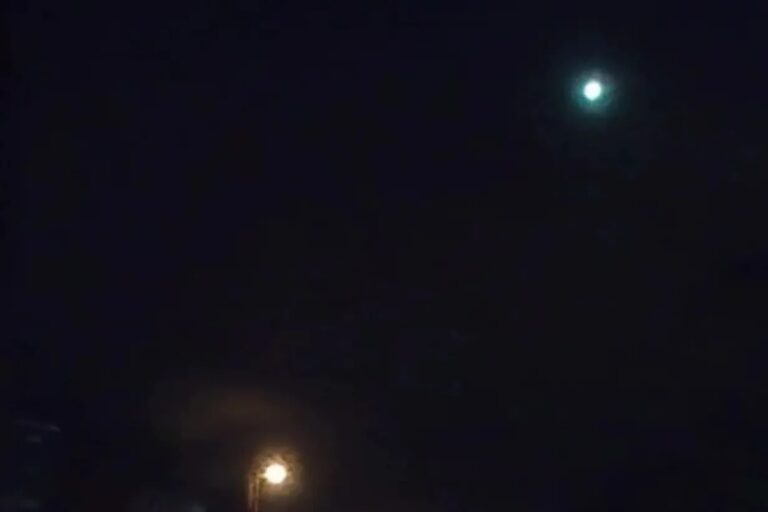INCREDIBLE footage shows a meteor streaking over the UK leaving stargazers in awe.
Lucky Brits in Northfields and Ealing, west London, have reported seeing a bright blob race through the city’s sky on Tuesday night.

2
Others claimed to have seen the unusual sighting from Wimbledon and Hampstead Heath.
And some even reported catching a glimpse as far afield as Brighton and Grantham.
One onlooker described seeing the “streak” of light dash through the clouds at around 8.10pm to 8.30pm, and initially believed it was fireworks.
A stargazer wrote on Reddit: “I’m used to seeing planes coming and going to Heathrow, and also helicopters coming and going; this was not that.
“My next thought was fireworks but I’m 90% sure it wasn’t that, and there was no explosion.
“For reference it was about the same size as the full-ish moon tonight, visible through the clouds, but as a much brighter blue-green color and, again, moving quite fast.
“It was a very odd combination of speed, size and brightness and didn’t look like anything I’ve ever seen in the sky here before.”
It is still unconfirmed what the bright light was.
But an astronomer at the Royal Astronomical Society told The Sun: “The fact that the meteor lasted long enough to allow the photographer to pick up their phone is significant, and suggests it was larger than average – though still probably only pebble sized.
“It was a sporadic meteor by the sound of it, but there are 6 to 10 sporadic meteors seen from a given location – skies permitting – every hour, so they’re not in any sense rare.
“The difference here is that the incoming object was larger, so it attracted a lot more attention.”
The astronomer said that any reports of green meteors were unconfirmed, but he did acknowledge that “green meteors are not unusual” due to colour reflections.
The Sun have also contacted the Royal Observatory Greenwich for comment.
However, the annual Draconid meteor shower has been reported to be visible this year until October 10.
The meteors, which are sometimes referred to as shooting stars, will appear as streaks of light in the evening sky.
Meteor showers occur when the Earth passes through the debris of a comet or an asteroid.
The debris, usually bits of rock or ice, hits the Earth’s atmosphere and burns up because of the friction, sending light streaks across the night sky.
And tonight, the spectacular harvest moon is set to reach its fullest in UK skies.
Before the invention of electric lights, farmers relied on the glow of the full moon to finish gathering crops after sunset which explains the origin of the name.
The lunar event is particularly significant as it is the first of three consecutive supermoons – which occur when a full moon is at its closest point to the Earth. The last was in November 2024.
The moon tonight is also known as a hunter’s moon.
It is usually the name given to the full moon that comes after the harvest moon – but on this occasion it occurs at the same time.

2


